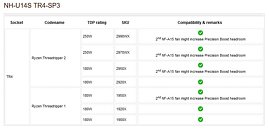- Joined
- Oct 9, 2007
- Messages
- 47,777 (7.41/day)
- Location
- Dublin, Ireland
| System Name | RBMK-1000 |
|---|---|
| Processor | AMD Ryzen 7 5700G |
| Motherboard | Gigabyte B550 AORUS Elite V2 |
| Cooling | DeepCool Gammax L240 V2 |
| Memory | 2x 16GB DDR4-3200 |
| Video Card(s) | Galax RTX 4070 Ti EX |
| Storage | Samsung 990 1TB |
| Display(s) | BenQ 1440p 60 Hz 27-inch |
| Case | Corsair Carbide 100R |
| Audio Device(s) | ASUS SupremeFX S1220A |
| Power Supply | Cooler Master MWE Gold 650W |
| Mouse | ASUS ROG Strix Impact |
| Keyboard | Gamdias Hermes E2 |
| Software | Windows 11 Pro |
Principled Technologies Wednesday published its first response to allegations of flawed and misleading "independent" comparison between the $319 AMD Ryzen 7 2700X and the 66% pricier $530 (pre-order price) Intel Core i9-9900K, which Intel used in its launch event to woo gamers and investors. In its response, the company elaborated on the reasons why it tested the AMD chip with memory and cooler settings reputed hardware reviewers found sub-optimal. "One goal of this study was to test the CPUs and their graphics subsystems, not the GPUs, so we ran the tests at the most common gaming resolution (62.06%), 1920×1080," reads the response, touting a foregone conclusion that gamers with $500 8-core processors still game at 1920 x 1080. We get that they, like every CPU reviewer, are trying to simulate a CPU-limited scenario, but to justify their settings with Steam Hardware Survey data as "the most common resolution," is a disingenuous argument.
We next see Principled Technologies justify the use of NH-U14S TR4-SP3 cooler on the Ryzen Threadripper 2990WX. Noctua, in its own TDP Guide for this cooler, states that 250W TDP (which also happens to be the TDP of the 2990WX), is the design limit of this air cooler, and goes as far as to mention that an additional NF-A15 fan, which is not included with the cooler, is recommended to be able to "increase Precision Boost headroom," implying that out of the box, the cooler is already bottlenecking the 2990WX. The Core i9-9980XE, on the other hand, has a rated TDP of 165W, and Noctua provides no additional guidance for 165W TDP Core X family processors, such as the Core i9-7980XE. Principled Technologies' reasoning for memory configuration proves they either continue to lack basic knowledge on AMD Ryzen memory controller limitations, or are deliberately disregarding it in an attempt to cripple AMD chips.

The Principled Technologies response contains no explanation as to why they used four memory modules, or a 4-module + dual-rank module configuration for mainstream desktop processors that feature dual-channel memory controllers. It has been common knowledge for close to two years now, that AMD Ryzen processors offer stunted performance when saddled with dual-rank memory modules, more so when all four memory slots of the motherboard are populated.
Simply mentioning the DRAM clock as 2933 MHz doesn't even paint half the picture. AMD platform motherboard BIOSes are programmed to automatically find stable memory timings for a given memory clock. Principled Technologies is quick to justify using the Wraith Prism cooler for the Ryzen 7 2700X "because AMD says so," but the same AMD document (Reviewer's Guide) that recommends Wraith Prism also provides a detailed account on the limitations of Ryzen's memory controllers. The controllers cannot handle 4-module + dual-rank configurations above DDR4-1866, 4-module single-rank (effectively dual-rank) above DDR4-2400, without severely loosening up memory timings to compensate for lack of stability.
2-module single-rank is not only an AMD-recommended configuration, but also 16 GB remains an overwhelmingly more popular memory amount than 32 GB vide Steam Hardware Survey (the same survey they used to justify 1080p game testing). In 2-module single-rank, a Ryzen processor will let you spool memory clocks all the way up to DDR4-3400, and memory modules exist that achieve that clock with reasonably tight timings.

It's good that Principled Technologies admitted the crime they committed testing the Ryzen 7 2700X with half its cores effectively disabled using the "game mode" toggle in Ryzen Master that no CPU reviewer tests with, and offer to re-test the processor. We wish that while they're at it, they also update their Ryzen Master utility to re-test the Ryzen Threadripper 2990WX with Dynamic Local Mode. The comparison with the re-badged Core i9-9980XE significantly will change.
Comparing a $319 processor with a 66% pricier $530 processor is disingenuous to begin with, and the only way you'll find out if the i9-9900K offers that much more performance is to wait for reviews from independent sources. So far there's none.
View at TechPowerUp Main Site
We next see Principled Technologies justify the use of NH-U14S TR4-SP3 cooler on the Ryzen Threadripper 2990WX. Noctua, in its own TDP Guide for this cooler, states that 250W TDP (which also happens to be the TDP of the 2990WX), is the design limit of this air cooler, and goes as far as to mention that an additional NF-A15 fan, which is not included with the cooler, is recommended to be able to "increase Precision Boost headroom," implying that out of the box, the cooler is already bottlenecking the 2990WX. The Core i9-9980XE, on the other hand, has a rated TDP of 165W, and Noctua provides no additional guidance for 165W TDP Core X family processors, such as the Core i9-7980XE. Principled Technologies' reasoning for memory configuration proves they either continue to lack basic knowledge on AMD Ryzen memory controller limitations, or are deliberately disregarding it in an attempt to cripple AMD chips.

The Principled Technologies response contains no explanation as to why they used four memory modules, or a 4-module + dual-rank module configuration for mainstream desktop processors that feature dual-channel memory controllers. It has been common knowledge for close to two years now, that AMD Ryzen processors offer stunted performance when saddled with dual-rank memory modules, more so when all four memory slots of the motherboard are populated.
Simply mentioning the DRAM clock as 2933 MHz doesn't even paint half the picture. AMD platform motherboard BIOSes are programmed to automatically find stable memory timings for a given memory clock. Principled Technologies is quick to justify using the Wraith Prism cooler for the Ryzen 7 2700X "because AMD says so," but the same AMD document (Reviewer's Guide) that recommends Wraith Prism also provides a detailed account on the limitations of Ryzen's memory controllers. The controllers cannot handle 4-module + dual-rank configurations above DDR4-1866, 4-module single-rank (effectively dual-rank) above DDR4-2400, without severely loosening up memory timings to compensate for lack of stability.
2-module single-rank is not only an AMD-recommended configuration, but also 16 GB remains an overwhelmingly more popular memory amount than 32 GB vide Steam Hardware Survey (the same survey they used to justify 1080p game testing). In 2-module single-rank, a Ryzen processor will let you spool memory clocks all the way up to DDR4-3400, and memory modules exist that achieve that clock with reasonably tight timings.

It's good that Principled Technologies admitted the crime they committed testing the Ryzen 7 2700X with half its cores effectively disabled using the "game mode" toggle in Ryzen Master that no CPU reviewer tests with, and offer to re-test the processor. We wish that while they're at it, they also update their Ryzen Master utility to re-test the Ryzen Threadripper 2990WX with Dynamic Local Mode. The comparison with the re-badged Core i9-9980XE significantly will change.
Comparing a $319 processor with a 66% pricier $530 processor is disingenuous to begin with, and the only way you'll find out if the i9-9900K offers that much more performance is to wait for reviews from independent sources. So far there's none.
View at TechPowerUp Main Site






 Its also completely not true that virtually every gaming oriented monitor out these days is first and foremost high refresh rate even before high resolution...
Its also completely not true that virtually every gaming oriented monitor out these days is first and foremost high refresh rate even before high resolution... 
